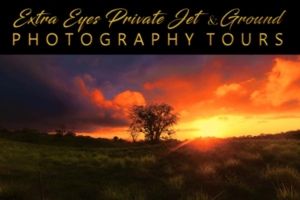HOW LONG TO PHOTOGRAPH JORDAN POND
You can set aside a minimum of two full days to explore every nook and cranny of this expansive park and its surrounding areas. From the sprawling forests to the winding paths that lead to hidden beauty, there is much to discover in this nature haven.
WHEN TO GO
The only time not to go is when they close the road down due to winter conditions. Check with the park before you go. Fall is ideal.
WHAT GEAR TO BRING
We suggest bringing a robust and versatile camera setup. Essential items include a DSLR or mirrorless camera, wide-angle and telephoto lenses, a sturdy tripod for long exposures, and multiple memory cards.
WHAT ELSE TO BRING
Hiking boots, bug spray, hats in summer, gloves, and a scarf during colder months are essential for a comfortable experience. Remember, this is Maine. It gets pretty chilly at night. A good-quality backpack that can handle your gear and personal necessities will help in your long treks.
Remember to bring water and some high-energy snacks to keep yourself fueled while exploring the vast park. There is a restaurant at Jordan Pond that you can plan to shoot around lunch or dinner time.
A field guide or map of the park could also help navigate between the popular spots and hidden gems this locaion offers. Lastly, bring binoculars for bird watching or observing far-off wildlife.
WHAT ELSE TO PHOTOGRAPH
Link to all the pages for these locations.
- ROCK BEACH
- THUNDER HOLE
- BASS HARBOUR LIGHTHOUSE
- LITTLE HUNTERS BEACH
Rock Beach is a favorite spot for the Milky Way. Also, remember the Bass Harbor Lighthouse for sunset and the Milky Way.
SEE ALL OF OUR MAINE HOT SPOTS TO VIEW INDIVIDUAL LOCATIONS.
DIFFICULTY
A lot of the park is easily accessible. Rock Beach has a set of stairs that make it difficult to get down to the beach. The Bass Harbor Lighthouse is challenging to shoot. There are slippery rocks and off-trail rocks to climb down to get to a spot to create a good shot. You can view it from a distance without climbing down, but you won’t get a good shot or be able to see the icon view.
WHAT TO EXPECT AT JORDAN POND
This trip may bring encounters with creatures such as foxes, white-tailed deer, and an occasional eagle. Don’t look for moose here. They are on the other side of the state.
HOW BUSY DOES IT GET?
As one of the top ten most visited national parks and sees its fair share of visitors, particularly during the summer when the weather is at its finest. We like Spring and Fall to avoid the crowds, and there are more ways to avoid the crush of people. Opt for early mornings or late afternoons, when most visitors are eating breakfast or dinner. Also, consider exploring some of the less-trodden paths. Even though they might not lead you to the most popular attractions, they can offer you a peaceful area, letting you bask in the serene beauty of the frequented corners.
MILKY WAY
This is one of the best places to photograph the Milky Way. The sky here is incredibly dark, and the Milky Way shines brilliantly overhead at certain times during certain months. Be sure to see our Milky Way Photography Page to learn when the Milky Way is visible.
NEARBY PHOTOGRAPHY
If this wasn’t enough, you can take advantage of the rare opportunity to photograph puffins up close near Cutler, Maine. The largest puffin colony on the East Coast is not far north of the park. Book your summer tours as early as March. They fill up fast!
HOW TO GET TO THERE
BY CAR: To reach Mount Desert Island from the south, follow I-95 north to Augusta, Maine, and then take Route 3 east to Ellsworth. Another option is to continue on I-95 north towards Bangor, then take Route 1A east to Ellsworth. From there, continue on Route 3 until reaching Mount Desert Island.
BY AIR: Travelers can take direct flights to Mount Desert Island from Boston’s Airport, which is only 10 miles away from the Hancock County Airport. National airlines are available for those flying into Bangor International Airport, just an hour from the island. Car rental services are offered at both airports for convenience.
WHERE TO STAY
There are numerous options throughout the park. We will be featuring Hotels, Motels and Cabins here. Please email us to advertise for only $129.00 for the entire year!! You can scroll down for information on where to stay.













 Photography, Lessons, Workshops and Classes.
Photography, Lessons, Workshops and Classes.